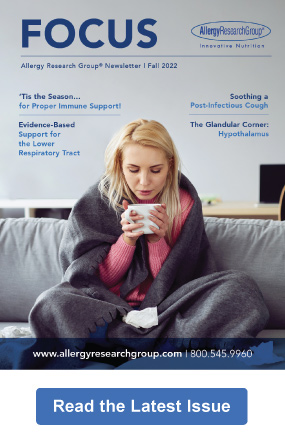Niacin for Alcoholism
Share this post
What vitamin B3 has to do with addiction
Taking a vitamin B3 (niacin) supplement may help treat alcohol use disorder and ease the symptoms of alcohol withdrawal.
Alcohol use disorder (AUD, or alcoholism) is a medical condition in which it is very difficult to control one’s alcohol use – even in the face of social, career, and/or health-related consequences.”[1]
One in eight Americans is an alcoholic.
A study published in 2017 in JAMA Psychiatry estimated that one in eight Americans is an alcoholic[2] – but that number is likely much higher today, in light of the global COVID-19 pandemic.[3],[4]
Alcohol depletes B vitamins – B3 in particular
There is a laundry list of ways in which drinking even moderate amounts of alcohol can harm our health – and an even longer list of health conditions associated with alcohol use disorder.
Alcohol over-consumption can cause malnutrition, gastrointestinal damage, and deficiencies of the B vitamins – conditions that in turn drive addictive behavior.[5]
Specifically, excessive and/or prolonged alcohol use can cause a deficiency of vitamin B3, triggering a potentially fatal disease known as pellagra.[6],[7] The symptoms of pellagra include diarrhea, dermatitis (skin irritation), and delirium (or dementia) – a collection of ailments known as “the three Ds”. Most people with the condition do not experience all three of these symptoms, however, meaning that mild to moderate cases of pellagra often go undiagnosed or misdiagnosed.[8]
Even mild cases of vitamin B3 deficiency can drive the biochemistry of alcohol addiction.
Even mild cases of vitamin B3 deficiency can drive the biochemistry of alcohol addiction. Niacin supplementation may be a cheap, simple, and highly effective way to undo the damage.
How alcohol drives the chemistry of addiction
Our brains run on nutrients – and people who regularly drink alcohol have weaker nutritional stores than those who don’t drink.[9] Specifically, the importance of B vitamins for brain health cannot be overstated.
Individuals with pellagra and deficiencies of other B vitamins are at high risk for developing depression and other mood challenges.
This happens in part because of alcohol’s rough effects on the liver, which in turn impair the liver’s ability to synthesize niacin precursors (the building blocks from which the body creates vitamin B3).
A deficiency of vitamin B6 further limits the body’s decarboxylation of 5-hydroxytryptophan (5-HTP), in turn starving the brain of the “feel good” neurotransmitter serotonin. Inadequate protein intake – such as that typically seen in alcoholics, as well as in vegetarians and vegans – can also reduce the production of serotonin.[10]
Heavy alcohol use decreases the body’s ability to synthesize nicotinamide adenine dinucleotide, or NAD+. NAD+ is a coenzyme required for energy production and hundreds of other metabolic reactions. NAD+ is so critical, in fact, that it is found in every cell of the human organism. Alcohol abuse diminishes the body’s synthesis of NAD+ cofactors, however, wreaking havoc on our physical and mental health.
NAD+ deficiency is not only a result of alcoholism, but also a cause of addiction.
NAD+ deficiency triggers unwanted behaviors and addictive tendencies, in effect driving the vicious cycle of alcohol abuse. In this sense, NAD+ deficiency is not only a result of alcoholism, but also a cause of addiction.[11]
The niacin-NAD+ connection
“Vitamin B3” is actually a collective term that refers to the NAD+ precursors niacin (or nicotinic acid), niacinamide (or nicotinamide), and nicotinamide riboside.[12] (Side note: the body can also make NAD+ out of the essential amino acid tryptophan, which is found in whole milk, tuna, turkey, chicken, and other foods.[13])
The late John P. Cleary, MD, explained that we are likely to experience strong cravings for substances like alcohol when our NAD+ receptor sites are empty. That’s because alcohol drives the formation of the chemical compound acetaldehyde, which then interacts with dopamine to yield morphine-like compounds that temporarily quell cravings and withdrawal symptoms. When the NAD+ receptor sites become unoccupied again, however, the withdrawal symptoms and alcohol cravings come rushing in, driving us back to the bottle.[14]
It may be possible to interrupt the addiction-withdrawal cycle by swapping out niacin for booze.
Fortunately, researchers, physicians, and patients alike have reported that it may be possible to interrupt the addiction-withdrawal cycle by swapping out niacin for booze. If dosed high enough – anywhere from 500 to 3,000 mg per day – niacin can occupy those hungry NAD+ receptor sites and abate alcohol cravings, ease withdrawal symptoms, and quell the compulsion to drink.[15]
In short: taking a niacin supplement might help treat alcohol use disorder (alcoholism).
Cleary’s pilot study on the nutrient found that 11 of 12 patients could comfortably quit drinking within three or four weeks of taking 500mg of niacin daily.[16] The details of Cleary’s pilot study were never published, however, so we can only use it today as a jumping-off point for further research.
Drs. Abram Hoffer and Humphry Osmond treated thousands of alcoholics in Saskatchewan, Canada in the 1950s and 1960s and reported excellent results with niacin therapy.[17] They found that vitamin B3 could not only alleviate alcohol cravings, but also abate delirium tremens, a highly unpleasant and potentially fatal form of alcohol withdrawal that includes shaking, hallucinations, sweating, and seizures. For the treatment of delirium tremens,* Hoffer and Osmond used a protocol of 3,000 mg (3 grams) of niacin three times daily for one day (the first day of delirium tremens), in addition to 3,000 mg (3 grams) of vitamin C three times daily.[18]
In 1958, Hoffer met Bill Wilson (aka “Bill W.”), the co-founder of Alcoholics Anonymous (AA).[19] After two weeks of taking 1,000 mg (1 gram) of niacin three times daily, Wilson experienced dramatic improvements in his previously relentless anxiety and fatigue. He would go on to conduct an informal study on niacin in 30 AA participants and to become a proponent of niacin therapy.[20] Wilson even wrote three manuscripts on the topic, advocating for the use of niacin within the AA program.[21],[22],[23] Story has it that when he was asked towards the end of his life what he would like to be remembered for, Wilson said niacin therapy – and not AA.[24],[25]
When he was asked towards the end of his life what he would like to be remembered for, Bill W. said niacin therapy – and not AA.
Wilson’s third manuscript included the report of Russell Smith, MD, a doctor who conducted a clinical study on the effects of vitamin B3.[26] Smith administered the vitamin (at a dose of 3 grams or more per day) to 507 alcoholics over a five-year period. Smith reports that about 75% of the patients benefitted from the vitamin B3 therapy. Twenty four percent of the study participants were categorized as having an “excellent” response to the treatment, meaning they reported stable moods and were completely abstinent from alcohol for a period of two or more years. Participants were more likely to have an “excellent” response if they were between the ages of 55 and 65; had a long history of alcoholism with delirium tremens, seizure, and severe withdrawals; and had endured severe, persistent insomnia prior to treatment.
A 2012 report stresses that doctors should consider niacin deficiency as a cause of delirium in patients withdrawing from alcohol. The authors of the report share three medical cases in which alcohol withdrawal-related delirium was not resolved by conventional pharmaceutical methods, but only by niacin therapy.[27]
Niacin supplementation has also been observed to reduce voluntary ethanol (alcohol) consumption in rats.[28]
Other benefits of niacin
Niacin is often used to normalize blood cholesterol levels, thereby fighting atherosclerosis and heart disease. In fact, niacin is one of the only agents proven to increase blood levels of the “good cholesterol” known as HDL.[29]
Niacin has also shown promise in the treatment of liver disease, reducing the amount of fatty deposits in the liver, reversing hepatic inflammation, fighting oxidative damage, and even decreasing fibrosis.[30],[31] Niacin supplementation has been shown to treat alcoholic fatty liver disease in both rats and humans.[32],[33]
Niacin supplementation may support liver health even in those who aren’t ready to quit drinking.
In rats consuming alcohol, niacin supplementation protected against the rises in triglycerides and the liver enzyme alanine transaminase (ALT, formerly known as SGPT) typically seen with ethanol intake.[34] These observations suggest that niacin supplementation may support liver health even in those who aren’t ready to quit drinking.
Niacin has also been observed to help fight stress, soothe anxiety, and combat depression – effects that may be further relevant in those with substance use disorders.[35],[36],[37]
A magic bullet?
Addiction is caused by many things, so it’s unlikely that any one “magic bullet” can cure the disease in isolation. That being said, alcohol use disorder and other types of addictions are indeed influenced by biochemical reactions – and biochemical reactions rely on a good supply of bioavailable nutrients.
While rigorous studies have shown that niacin can improve cardiovascular health and fight both alcoholic and non-alcoholic liver disease, the evidence for niacin in the treatment of alcohol dependence is patchier. That being said, a considerable body of anecdotal and case-study evidence suggests that vitamin B3 megadose therapy can treat alcohol dependence, withdrawal, and even delirium tremens in some circumstances.
Some sources recommend a dose of 500mg of niacin daily for those with alcohol use disorders; others argue for the higher dose of 1 gram three times daily with meals.
The risks of niacin therapy include skin reactions like flushing, blushing, and itching – which can typically be ameliorated by taking the vitamin with food and/or aspirin. High doses of niacin can also cause digestive upset.[38] While the nutrient can be used to treat liver disease, niacin can ironically also be toxic to the liver.[39]
Can niacin alone treat alcoholism? Probably not. But does it have the potential to be a powerful remedy within the context of a comprehensive addiction-interruption treatment plan? Absolutely. More studies are warranted.
* Note: Alcohol withdrawal can be deadly. Please seek out professional care if you or somebody who know develops delirium tremens; do not attempt to treat it at home.
More on nutrition and addiction
Are you interested in learning more about orthomolecular nutrition in the treatment of substance use disorders (addictions)? Check out our series of vitamin C and opioid-use disorder.
References
Click here to see References[1] Understanding Alcohol Use Disorder [Internet]. Bethesda (MD): National Institute on Alcohol Abuse and Alcoholism (NIAAA); 2020 [cited 2021 Jun 21]. Available from: https://www.niaaa.nih.gov/publications/brochures-and-fact-sheets/understanding-alcohol-use-disorder
[2] Grant BF, et al. Prevalence of 12-month alcohol use, high-risk drinking, and DSM-IV alcohol use disorder in the United States, 2001-2002 to 2012-2013: results from the National Epidemiologic Survey on Alcohol and Related Conditions. JAMA Psychiatry. 2017;74(9):911-23.
[3] Clay JM, Parker MO. Alcohol use and misuse during the COVID-19 pandemic: a potential public health crisis? Lancet Public Health. 2020 May;5(5):e259.
[4] Ramalho R. Alcohol consumption and alcohol-related problems during the COVID-19 pandemic: a narrative review. Australas Psychiatry. 2020 Oct;28(5):524-6.
[5] Badawy AA. Pellagra and alcoholism: a biochemical perspective. Alcohol. 2014;49:238-50.
[6] Prousky JE. The treatment of alcoholism with vitamin B3. JOM. 2014;29(3):123-31.
[7] Oldham MA, Ivkovic A. Pellagrous encephalopathy presenting as alcohol withdrawal delirium: a case series and literature review. Addict Sci Clin Pract. 2012;7:12.
[8] Narasimha VL, et al. Pellagra and alcohol dependence syndrome: findings from a tertiary care addiction treatment centre in India. Alcohol Alcohol. 2019 Mar 1;54(2):148-51.
[9] Lewis MJ. Alcoholism and nutrition: a review of vitamin supplementation and treatment. Curr Opin Clin Nutr Metab Care. 2020 Mar;23(2):138-44.
[10] Badawy AA. Pellagra and alcoholism: a biochemical perspective. Alcohol. 2014;49:238-50.
[11] Prousky JE. The treatment of alcoholism with vitamin B3. JOM. 2014;29(3):123-131.
[12] Niacin [Internet]. Linus Pauling Institute, Micronutrient Information Center. Corvallis (OR): Oregon State University; 2018 [cited 2021 Jun 23]. Available from: https://lpi.oregonstate.edu/mic/vitamins/niacin
[13] Top foods high in tryptophan [Internet]. WebMD; 2021 [cited 2021 Jun 23]. Available from: https://www.webmd.com/diet/foods-high-in-tryptophan#1
[14] Cleary JP. The NAD deficiency diseases. J Orthomol Med. 1986;1:149-57.
[15] Cleary JP: Etiology and biological treatment of alcohol addiction. J Orthomol Med. 1987;2:166-8.
[16] Cleary JP: A consideration of niacin as an inhibitor of the predator response. J Orthomol Med. 2003;18:5-8.
[17] Tanne JH. Humphry Osmond. BMJ. 2004 Mar 20; 328(7441):713.
[18] Hoffer A. Niacin Therapy in Psychiatry. Springfield, IL. Charles C Thomas. 1962;83-8.
[19] Hoffer A. Adventures in Psychiatry. Caledon, ON. KOS Publishing Inc. 2005; 244-54.
[20] Prousky JE. The treatment of alcoholism with vitamin B3. JOM. 2014;29(3):123-31.
[21] W B. The Vitamin B3 Therapy: a promising treatment for schizophrenia – and its high relevance to the field of alcoholism. December, 1965.
[22] W B. The vitamin B3 therapy: a second communication to A.A.’s physicians. February, 1968.
[23] W B. The vitamin B3 therapy: a third communication to A.A.’s Physicians. January, 1971.
[24] Rosenthan H. Alcoholics Anonymous founder Bill Wilson’s long-lost treatment paradigm [Internet]. Sausalito (CA): Psychotherapy.net; 2017 [cited 2021 Jun 23]. Available from: https://www.psychotherapy.net/blog/title/alcoholics-anonymous-founder-bill-wilson-s-long-lost-treatment-paradigm
[25] B T. Bill Wilson: always a seeker [Internet]. AA Agnostica; 2021 [cited 2021 Jun 23]. Available from: https://aaagnostica.org/2016/06/02/bill-wilson-always-a-seeker/
[26] Smith RF. A five-year field trial of massive nicotinic acid therapy of alcoholics in Michigan. J Orthomolec Psych. 1974;3:327-31.
[27] Oldham MA, Ivkovic A. Pellagrous encephalopathy presenting as alcohol withdrawal delirium: a case series and literature review. Addict Sci Clin Pract. 2012;7:12.
[28] Pekkanen L, Rusi M. The effects of dietary niacin and riboflavin on voluntary intake and metabolism of ethanol in rats. Pharmacol Biochem Behav. 1979 Nov;11(5):575-9.
[29] Nagalski A, Bryła J. Niacin in therapy. Postepy Hig Med Dosw. 2007 May 15;61:288-302.
[30] Kashyap ML, et al. Niacin for treatment of nonalcoholic fatty liver disease (NAFLD): novel use for an old drug? J Clin Lipidol. Nov-Dec 2019;13(6):873-9.
[31] Dou X, et al. Protection of nicotinic acid against oxidative stress-induced cell death in hepatocytes contributes to its beneficial effect on alcohol-induced liver injury in mice. J Nutr Biochem. 2013 Aug;24(8):1520-8.
[32] Li Q, et al. Dietary nicotinic acid supplementation ameliorates chronic alcohol-induced fatty liver in rats. Alcohol Clin Exp Res. 2014 Jul;38(7):1982-92.
[33] Kharbanda NK, et al. Nicotinic acid supplementation in the context of alcoholic liver injury: friend or foe? Alcohol Clin Exp Res. 2014 Jul;38(7):1829-31.
[34] Kolovou GD, et al. The effect of nicotinic acid and alcohol co-administration in Wistar rats. Methods Find Exp Clin Pharmacol. Jan-Feb 2005;27(1):17-23.
[35] Prousky J. Supplemental niacinamide mitigates anxiety symptoms: report of three cases. J Orthomol Med. 2005;20:167-78.
[36] Prousky J: Niacinamide’s potent role in alleviating anxiety with its benzodiazepine-like properties: a case report. J Orthomol Med. 2004;19:104-10.
[37] Prousky J: Vitamin B3 for depression: case report and review of the literature. J Orthomol Med. 2010;25:137-47.
[38] Mills E, et al. The safety of over-the-counter niacin. A randomized placebo-controlled trial [ISRCTN18054903]. BMC Clin Pharmacol. 2003:3(4).
[39] MacKay D, et al. Niacin: chemical forms, bioavailability, and health effects. Nutr Rev. 2012;70(6):357-66.
The information provided is for educational purposes only. Consult your physician or healthcare provider if you have specific questions before instituting any changes in your daily lifestyle including changes in diet, exercise, and supplement use.
Share this post
Dr. Erica Zelfand
Related posts
Biohacks for a Calmer, Happier, More Focused You (Video)
Meet your new best friend – your vagus nerve. Through simple biohacks, we can use our bodies to affect our mood, focus, and productivity. In this video, naturopathic physician Dr. Erica Zelfand introduces the vagus nerve – a nerve that travels from the head to the throat, heart, lungs, kidneys, digestive tract, and even…
Craving Sweets? You Might Be Stressed!
When stress talks louder than the stomach Most people crave sweet or salty foods like cookies, chocolates, or potato chips when under stress, and research offers us an understanding of why.[1] Scientists have discovered receptor sites on taste buds that respond to the hormones cortisol, cortisone and corticosterone, altering our taste perception when we’re…
Cardiovascular Health and Lipoprotein(a)
Addressing a genetic issue and supporting cardiovascular health naturally Anyone who has ever listened to his or her own heart with a stethoscope has likely found the lub-dub pattern reassuring. The rhythmic regularity of the heart at rest can lull us into meditation, much like it helps an infant go to sleep, while the…
Alcohol and Tylenol Can Be a Deadly Combination
Why taking acetaminophen (paracetamol) for a hangover is a dangerous idea. The over-the-counter pain medication acetaminophen is a surprisingly controversial drug. Sold under the brand name Tylenol in North America and known as paracetamol in other countries, acetaminophen can be taxing to the liver. Acetaminophen is the number one cause of acute liver failure…
Addressing Allergies: A Multi-Pronged Approach
Strategies for soothing itchy eyes and silencing sneezes Much like the majority of chronic, and even acute, health conditions we may face, there are many approaches to the treatment of allergies. The immune system is one major focus, but the health of the gut, management of environmental triggers, correction of nutritional deficiencies, and the…
A Better Diet for Better Sperm Health
Simple ways to improve male fertility If you’re planning to start a family, here’s how to improve your chances of success. About 2/3 of couples succeed in getting pregnant within six months of starting unprotected sex. However, as many as 1 in 6 couples do not become pregnant within a year. Although the focus…
Categories
- Botanicals (56)
- GI Health (53)
- Healthy Aging (121)
- Immune Support (39)
- In The News (39)
- Kids Health (21)
- Stress and Relaxation (50)
- Uncategorized (1)
- Video (9)
- Vitamins & Minerals (51)




